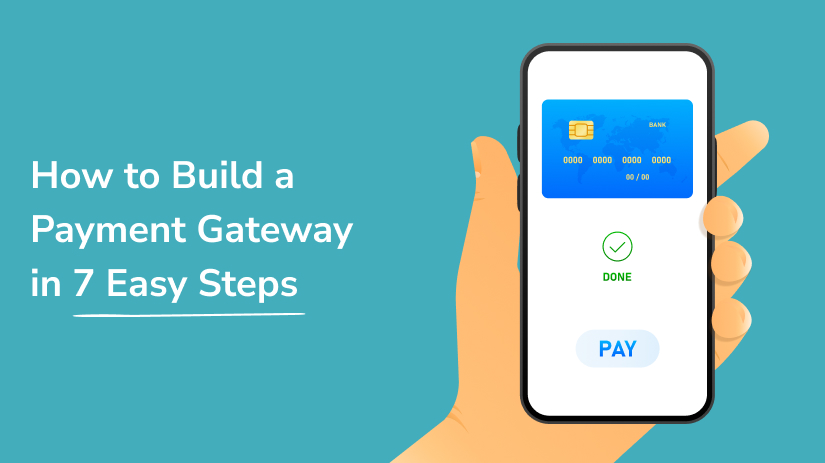Creating a payment gateway can seem like a daunting task, but by breaking it down into manageable steps, you can develop a secure and efficient system.
Whether you’re building it for mobile payment applications, money transfer applications, or an e-commerce site, here’s a step-by-step guide to get you started.
Step 1: Understand the Basics
Before diving into the technical details, it’s crucial to understand what a payment gateway does. Payment gateway integrations are services that process credit card transactions for online and offline businesses. They securely transmit payment information from customers to the acquiring bank, ensuring smooth transactions.
Step 2: Choose the Right Technology Stack
Selecting the appropriate technology stack is vital. For example, if you’re working with a Ruby on Rails development agency, you might choose Ruby on Rails for its simplicity and efficiency. Make sure your choice aligns with your team’s expertise and project requirements.
Connect with us for Fintech Development Needs
Trusted by companies like Plaid, Yodlee, Codat.
Step 3: Set Up a Merchant Account
To process transactions, you need a merchant account. This account acts as a bridge between your payment gateway and the acquiring bank. Research and choose a reliable merchant account provider that offers favorable terms and robust support.
Step 4: Integrate Payment Methods
Your payment gateway should support various payment methods to cater to a broad audience. This includes credit and debit cards, mobile payment applications, and digital wallets. Integration involves using APIs provided by payment processors and ensuring they work seamlessly with your system.
Step 5: Implement Security Measures
Security is paramount in payment gateways. Implement SSL certificates, encryption protocols, and follow PCI-DSS compliance standards to protect sensitive data. Regular security audits and updates are essential to prevent breaches and maintain customer trust.
Step 6: Develop User Interfaces
Create user-friendly interfaces for both merchants and customers. This includes dashboards for transaction management, reporting tools, and seamless checkout experiences. Intuitive design and ease of use are critical for the adoption and success of your payment gateway.
Connect with us for Fintech Development Needs
Trusted by companies like Plaid, Yodlee, Codat.
Step 7: Testing and Launch
Before going live, conduct thorough testing to identify and resolve any issues. Test for performance, security, and usability across different devices and platforms. Once satisfied, deploy your payment gateway and monitor it closely for any initial hiccups.
Bonus Tip: Continuous Improvement
Building a payment gateway is not a one-time project. Continuously monitor its performance, collect feedback, and implement improvements. Stay updated with the latest trends and technologies in the payment industry to keep your system competitive.
Conclusion
Building a payment gateway involves careful planning, secure implementation, and ongoing maintenance. By following these seven steps, you can develop a robust system that supports various payment methods, ensuring smooth and secure transactions.
Whether you’re working with a Ruby on Rails development agency or exploring the best donor management systems, a well-built payment gateway is essential for any modern financial application.
Integrating payment gateways effectively can transform your business operations, especially in the realms of mobile payment applications and money transfer applications. Keep these steps in mind, and you’ll be well on your way to creating a seamless payment experience for your users.
Connect with us for Fintech Development Needs
Trusted by companies like Plaid, Yodlee, Codat.
Frequently Asked Questions (FAQs)
1. What is a payment gateway?
A payment gateway is a service that processes credit card transactions for both online and offline businesses. It securely transmits payment information from customers to the acquiring bank, facilitating smooth transactions.
2. Why is choosing the right technology stack important for building a payment gateway?
The right technology stack ensures that your payment gateway is efficient, secure, and scalable. For instance, using Ruby on Rails with the help of a Ruby on Rails development agency can provide simplicity and speed, which are crucial for building and maintaining a reliable payment gateway.
3. What is a merchant account and why do I need one?
A merchant account is a type of bank account that allows businesses to accept and process electronic payment card transactions. It's essential for processing transactions through your payment gateway, acting as a bridge between the payment gateway and the acquiring bank.
4. How can I integrate various payment methods into my payment gateway?
You can integrate various payment methods by using APIs provided by different payment processors. Ensure that your system can handle credit and debit cards, mobile payment applications, and digital wallets to cater to a wide range of customers.
5. What security measures should I implement in my payment gateway?
Implementing SSL certificates, encryption protocols, and following PCI-DSS compliance standards are crucial for protecting sensitive data. Regular security audits and updates are also essential to maintain a secure payment gateway.





